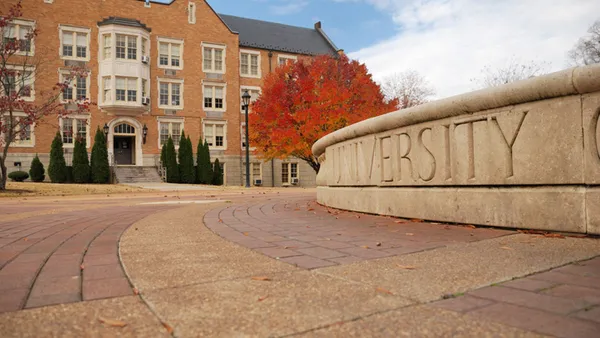Dive Brief:
- As the U.S. Department of Education prepares to end the pandemic-induced freeze on federal student loan repayments and interest accrual, the agency plans to smooth the process by providing targeted outreach to certain borrowers and offering them flexibility for when repayment restarts.
- That's according to a new report from the U.S. Government Accountability Office that in part reviewed how the Education Department plans to address potential hurdles for borrowers when student loan repayment resumes in May 2022. About half of all borrowers are estimated to be at increased risk for becoming delinquent, the GAO report said.
- The report found 42.3 million borrowers are covered by the student loan repayment freeze, which began in March 2020 because of the coronavirus pandemic. About 26.6 million loans will be reentering repayment in May, 7.2 million are in default and 9 million won't require payments yet because their borrowers enrolled in classes or are in a grace period.
Dive Insight:
By the time federal student loan repayments resume in May, payments and interest accrual will have been suspended for more than two years. Ed Department officials expect that long period of inactivity will make it difficult to motivate borrowers to make payments again.
That's partly why the Ed Department is communicating directly with borrowers about resuming payments — a change from traditionally relying on loan servicers to contact them. Officials are planning to communicate with borrowers each month through several outreach methods, including emails, public messages on the department's website, social media and text messages.
As of December, Ed Department officials estimated they had current email addresses for 87% of borrowers whose payments were suspended. They plan to reach the remaining borrowers by having loan servicers mail them and providing important information online.
The agency is planning targeted messages and assistance for certain borrowers, including those at increased risk of becoming delinquent, those who've defaulted on their loans and those who were automatically paying their student loan bills before the payment pause. The last group will have to confirm they want to continue having their payments withdrawn when repayment resumes.
The Ed Department expects many borrowers will need extra messaging to reduce their delinquency risk. This group includes borrowers who entered repayment in the past three years, because the agency anticipates they may need extra support developing healthy payment behaviors.
Officials are also planning to offer some flexibility to borrowers once payments resume. For instance, the Ed Department temporarily won't report missed payments to credit rating agencies. And the 8.7 million borrowers on income-driven repayment plans won't have to recertify their current income and family size for six months after repayment restarts.
To ease the transition, Ed Department officials are requiring loan servicers to add evening and weekend call hours for customer service representatives. The agency will oversee this effort by monitoring metrics such as call wait times and having people phone the centers to evaluate the service.
Additional messaging is needed for the roughly 12.2 million borrowers whose loan servicers have recently changed or will by the end of this year. Three giant servicers — Navient, FedLoan Servicing and Granite State Management and Resources— announced recent exits from the federal student loan market. The Ed Department plans to email borrowers affected by these changes before and after their loans are transferred to new servicers.















